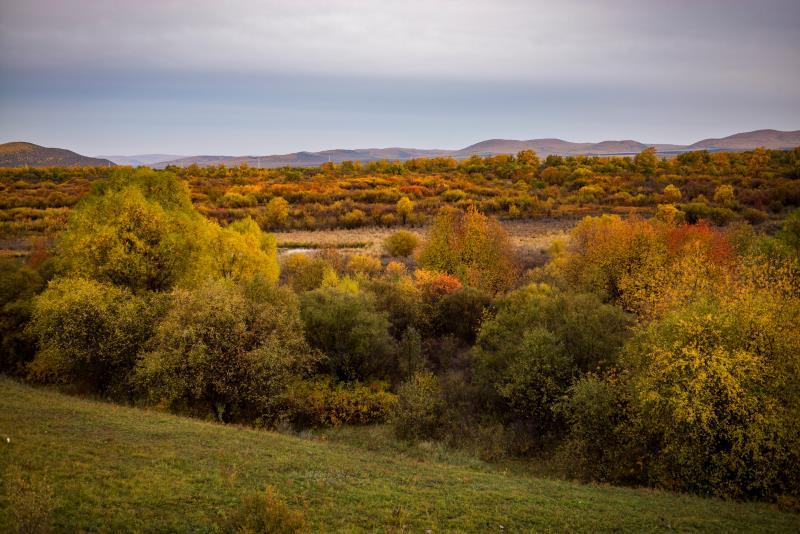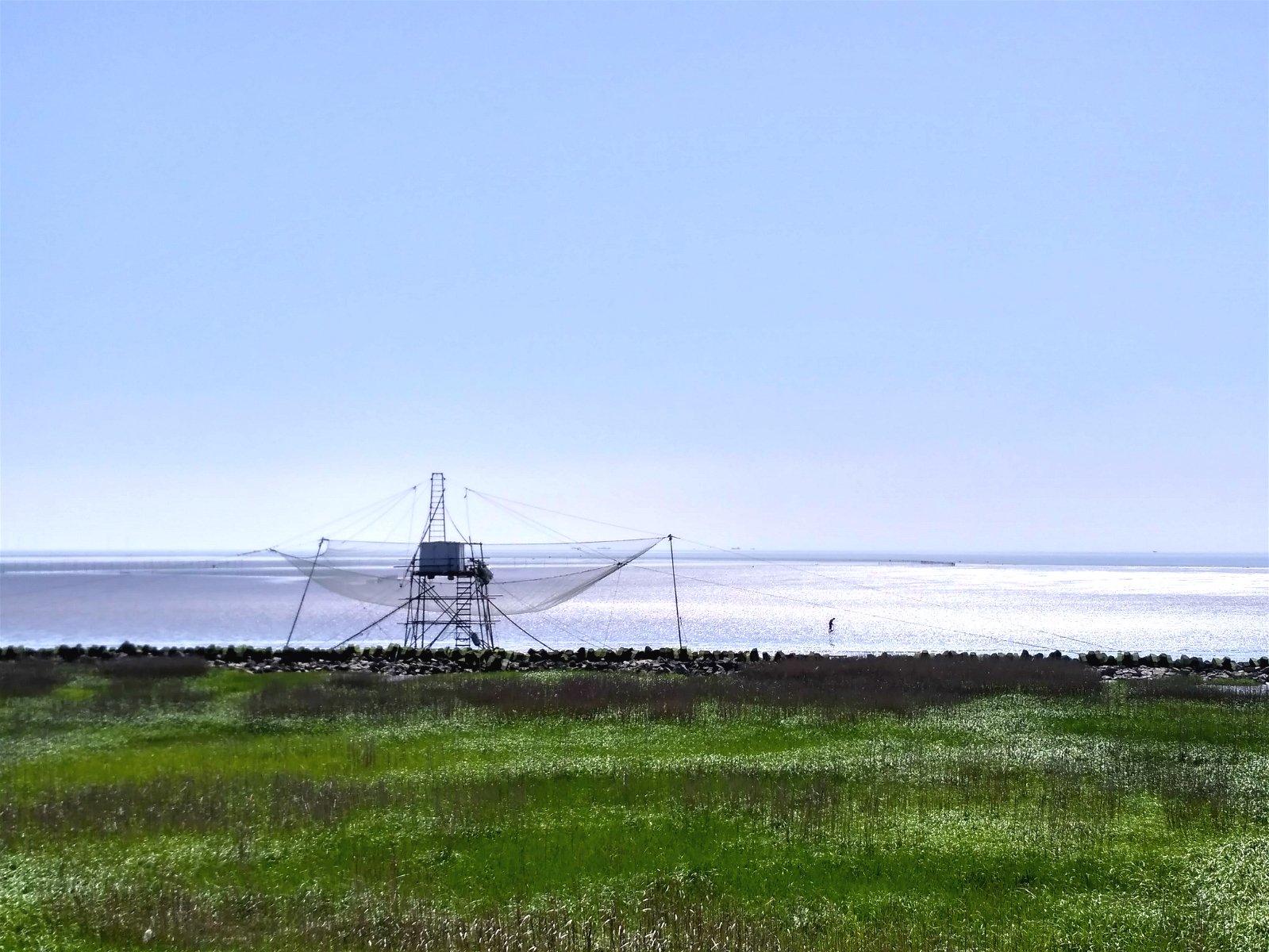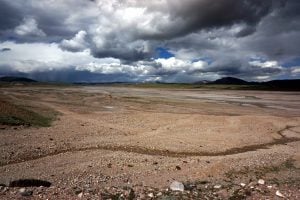China has a wider range of wetland types than most countries but these important ecosystems are shrinking rapidly. Between 1950 and 2000 China lost 57% of its coastal wetlands, 73% of its mangrove forests, 80% of its coral reefs, and two thirds of its coastline suffered erosion – and all because of land reclamation, pollution, overfishing and aquaculture, and encroachment of invasive species.
Wetlands have important ecological and climate functions. China’s coastal wetlands form an important part of the East Asian-Australasia Flyway, one of nine major migratory pathways for waterfowl that every year provides a habitat for 240 species of migratory bird.
Coastal wetlands also play a vital ecological role by cleansing water, preventing soil erosion, and protecting coastline. Mangrove forests act as natural barriers to reduce the impact of typhoons and storm surges, and can even reduce the negative effects of sea level rises associated with climate change.

Green dots indicate important habitats for migratory waterfowl, red dots are those included within the East Asian-Australasian Flyway Partnership. Source: East Asian-Australasian Flyway Partnership.
But despite their importance, coastal wetlands have been poorly protected. On China’s south-east coast large areas of mangrove forest have been destroyed to make way for infrastructure, buildings and aquaculture. Expanses of wetland have been reclaimed as farmland, making up for areas lost to construction further inland. Even some national wetland reserves have not escaped, with reserve boundaries being shrunk to allow for economic development – such as at the Yancheng Nature Reserve, the Tianjin Ancient Coast and Wetland Reserve, and the Dalian Spotted Seal Reserve.
Protection in principle
China set out a specific wetlands protection policy in its 2013 Regulations for Conservation and Management of Wetlands. This states that in principle construction should not take place on wetlands, or do so as little as possible. However, if compensation is paid then construction can still take place.
China’s wetlands were estimated at 53.6 million hectares in the 2014 Second National Wetland Resources Survey. This was 3.4 million hectares less than the figure recorded in the first survey in 2003. Important migratory bird habitats were being lost to aquaculture and reclamation of land for industrial zones, airports and conference centres.
In 2015, China listed 53.3 million hectares of wetland for protection and as a target for the construction of an ecological civilization. But with ever worsening land shortages, pressures on wetlands have increased. According to a report from the Paulson Institute, a new round of coastal development will require 578,000 hectares of land to be reclaimed by 2020, and at current rates the 53.3 million hectare redline will be breached by the end of 2018. The rules have clearly failed to rein in development on wetlands.
It’s also the case that excessive development is leaving only empty “ghost cities” on China’s coast. Some new cities have amusement parks with Ferris wheels and rollercoasters, zoos with pandas, and aquariums – but no people.
A new start
And so the revision of rules on wetlands protection has been closely watched. A public consultation recently closed and a final draft is in the works. But is there new hope that development pressures will be relieved?
The consultation draft of the rules introduced the concept of ecological redlines: “The State Forestry Administration should, with departments of the State Council, identify wetlands to be included within the redline and produce a list of these.”
This is in line with current state policy of bringing all important ecological regions (including forests, grasslands, oceans and wetlands) within the protection of a redline to prevent further development and provide strong protection. This is an encouraging signal for the future of wetlands protection. But it is unclear how this will be overseen and enforced in the case of wetlands.

Ergun wetland in Inner Mongolia is one of the largest and best preserved wetlands in China (Image: 肖诗白/绿色和平)
Standing guard
There is also new language on the appropriation of wetlands. The original 2013 version of the rules allowed this, provided procedures were followed and compensation paid by the work unit concerned.
The consultation draft of the revised rules explicitly forbids unauthorised appropriation of nationally or locally important wetlands. In cases where wetlands must be developed, an equivalent area must be restored or created elsewhere in advance, to ensure the total area of wetland does not change.
The fact that this must be done in advance of construction, with wetlands provided to be of equal quality and area to those used, will help ward off developers. But only forbidding development “without authorisation” is worrying – it means that development can still go ahead if legal procedures are followed. This is likely to threaten future wetlands protection as some companies will use this loophole and it will be hard to prevent development.
Also, there are some wetlands that have enormous ecological significance. Those such as the Hebei Luannan wetlands and the Rudong and Dongtai Shoals wetlands in Jiangsu meet requirements to be regarded as internationally important but are not included on either national or local lists of important wetlands, and so do not receive any special treatment.
It is these wetlands, which are irreplaceable for China’s ever-reducing coastal biodiversity and migratory pathways, that are quietly being swallowed up by land reclamation. The fate of these unprotected wetlands is of great concern.
Wetland ecosystems are highly vulnerable and in many cases damage is irreversible. Even if restoration is possible it is a long and expensive process. So rather than focus on requiring the “replacement” of wetlands, it is more important to protect wetlands from development in the first place – only then can the 53.3 million hectares redline be maintained.








